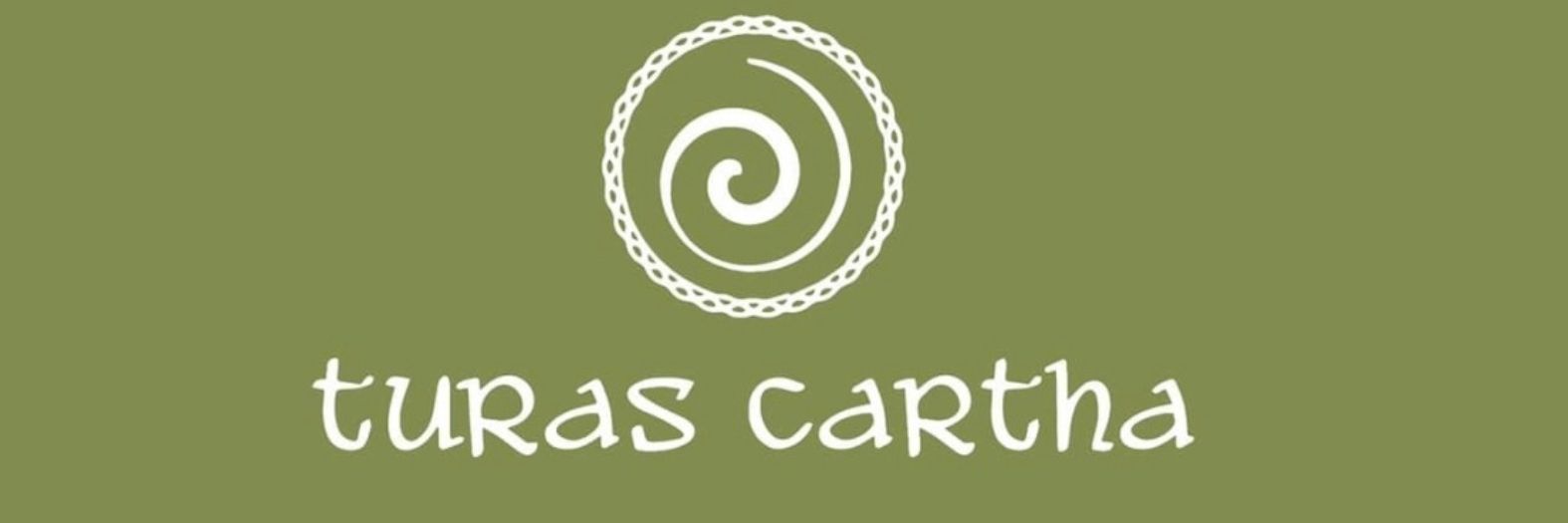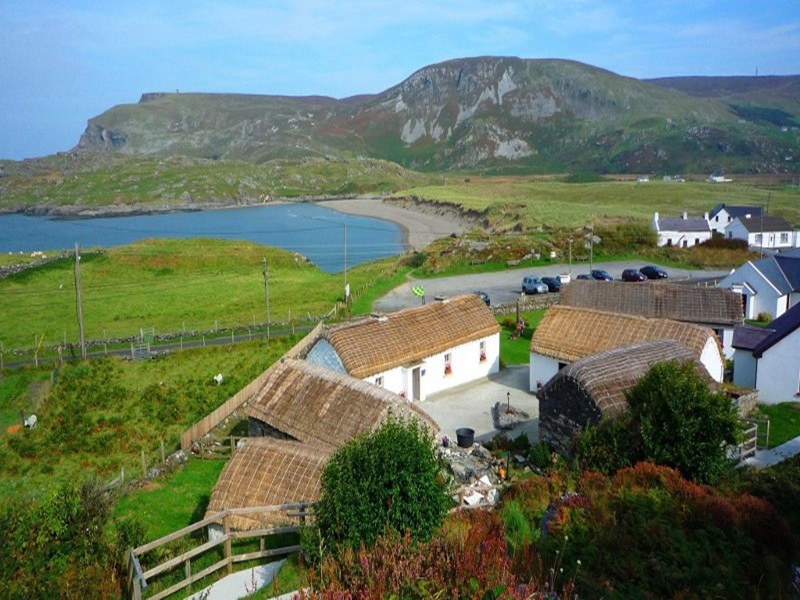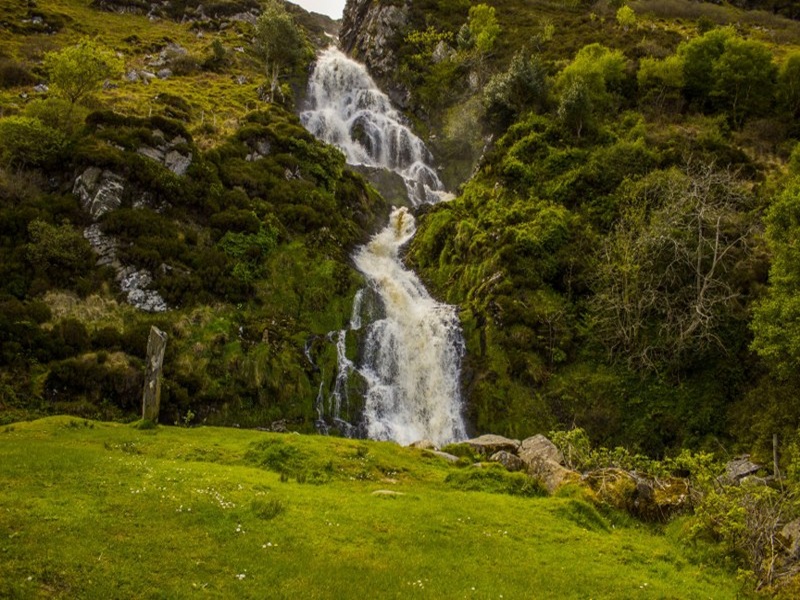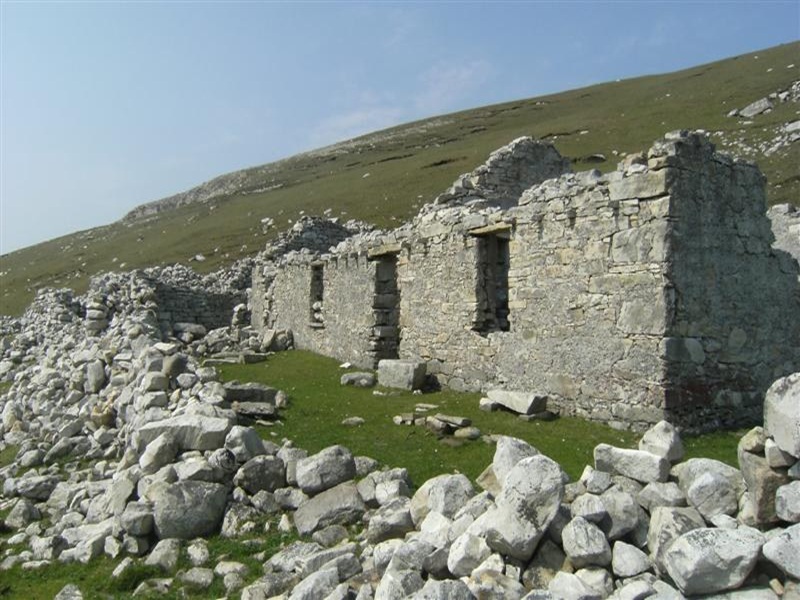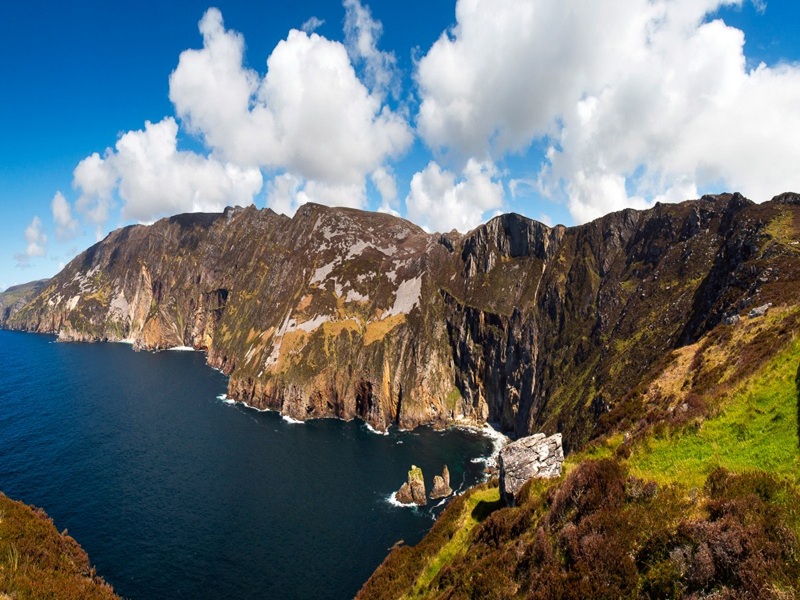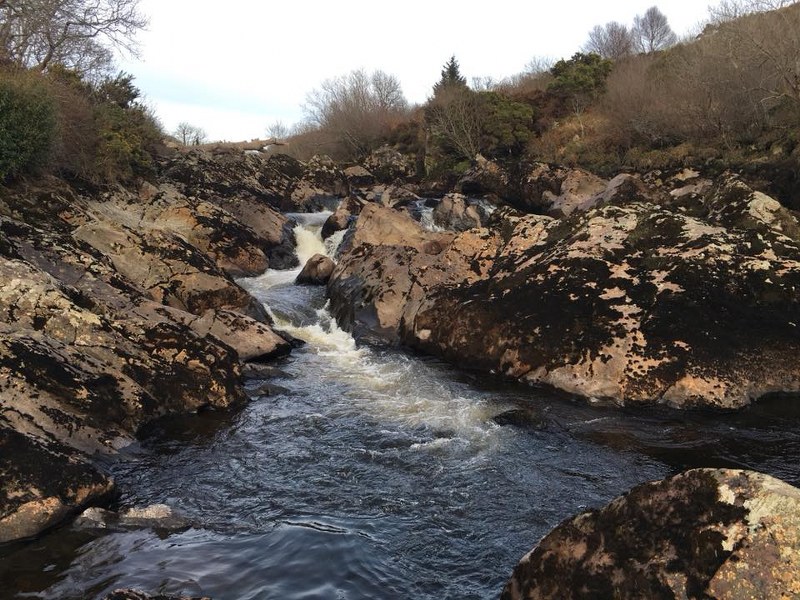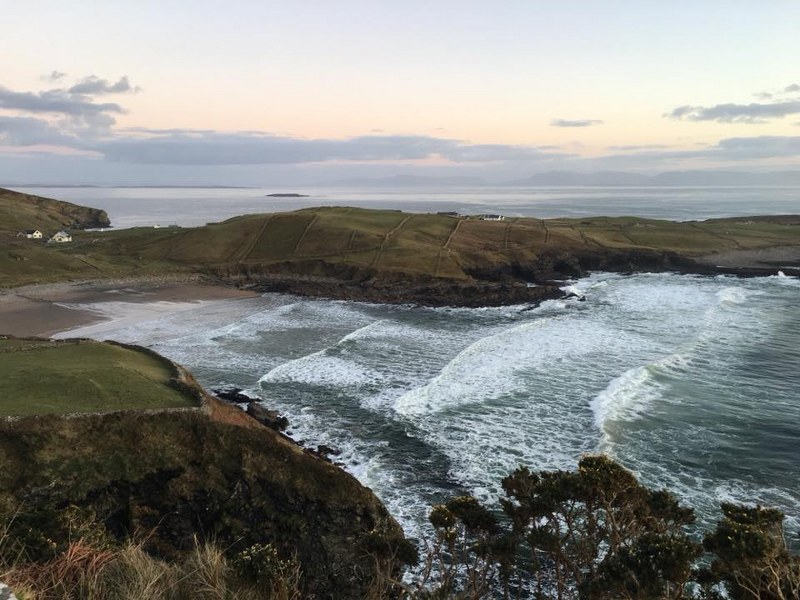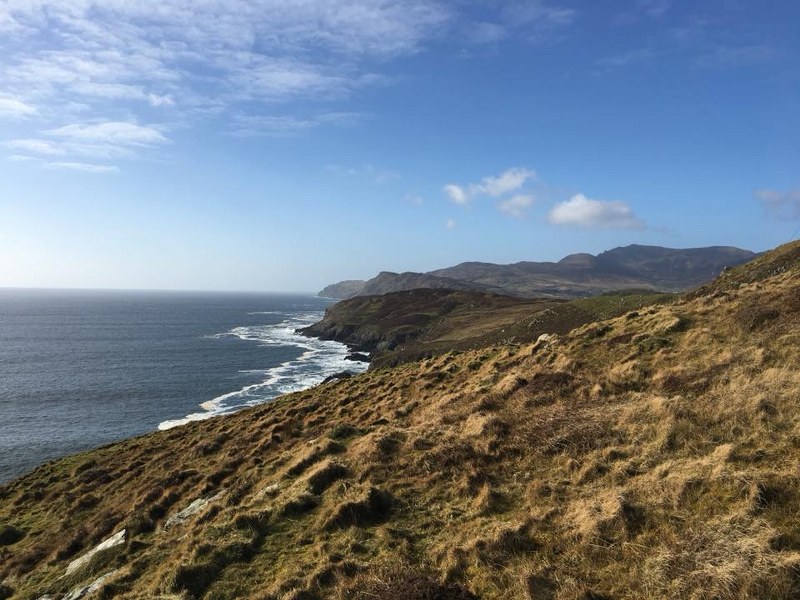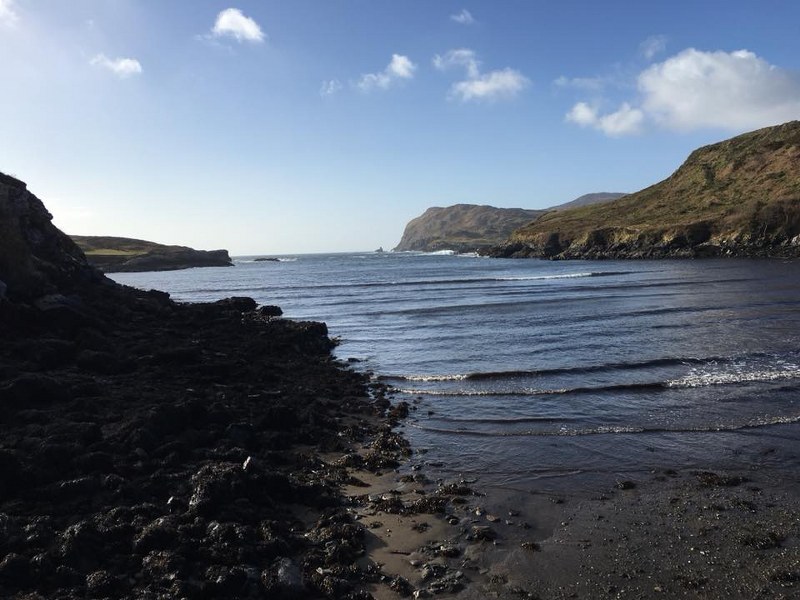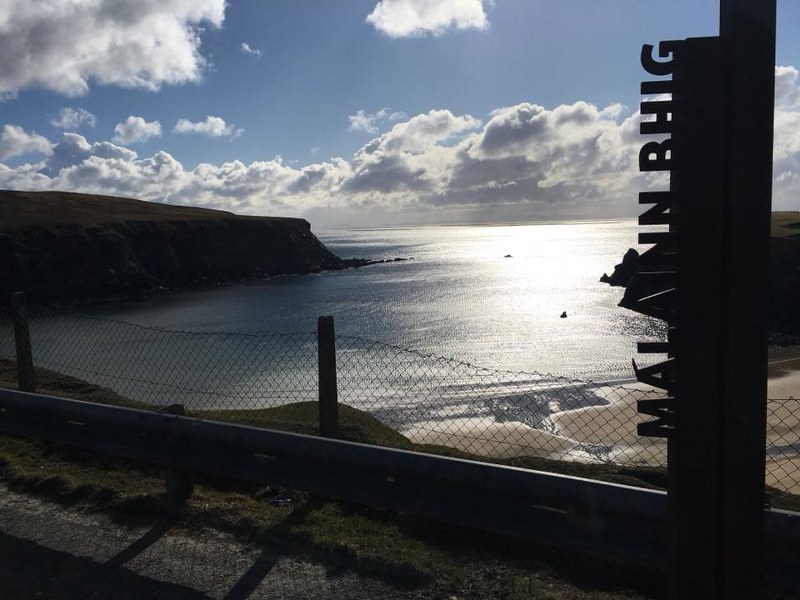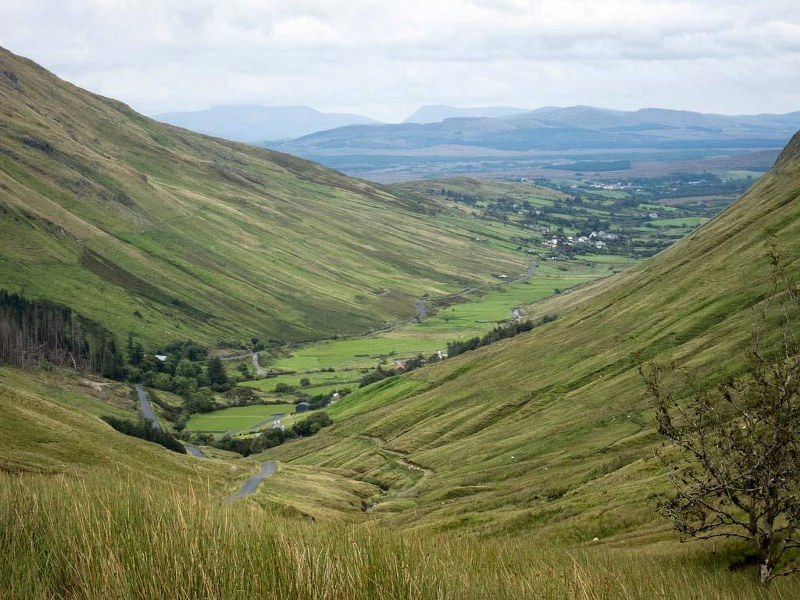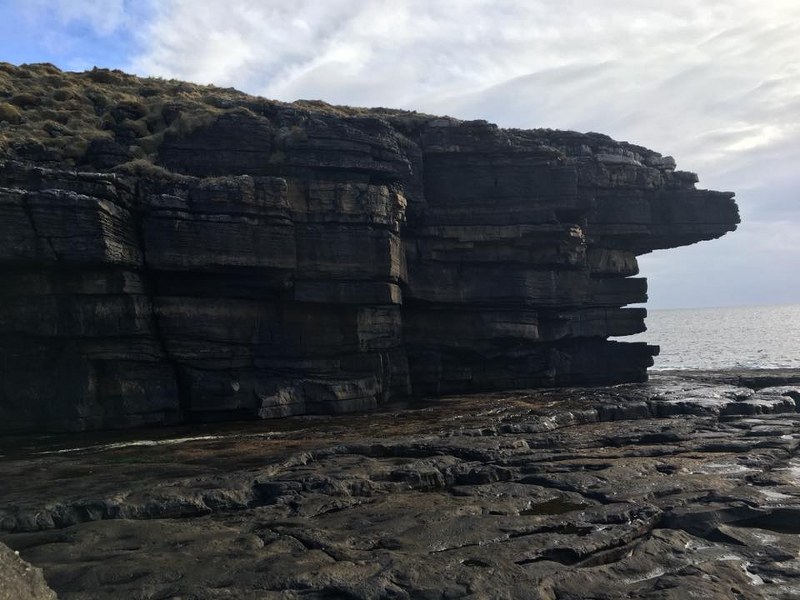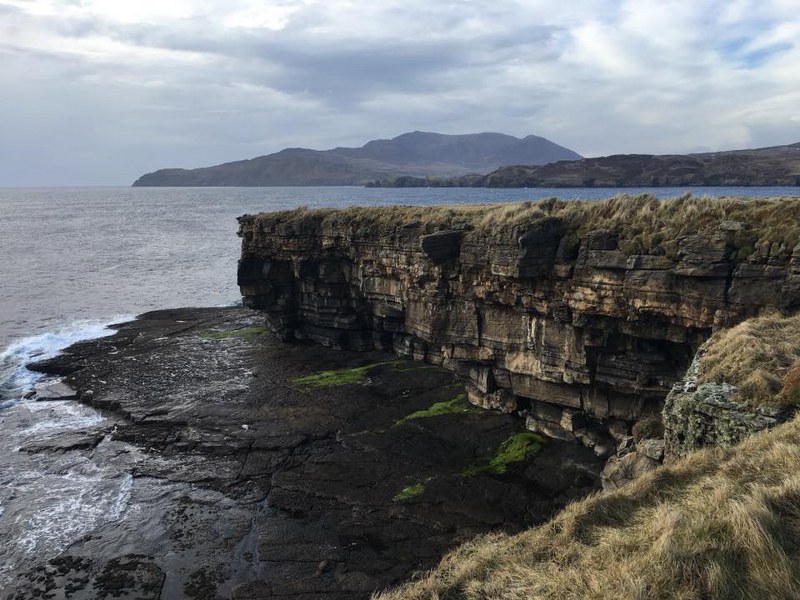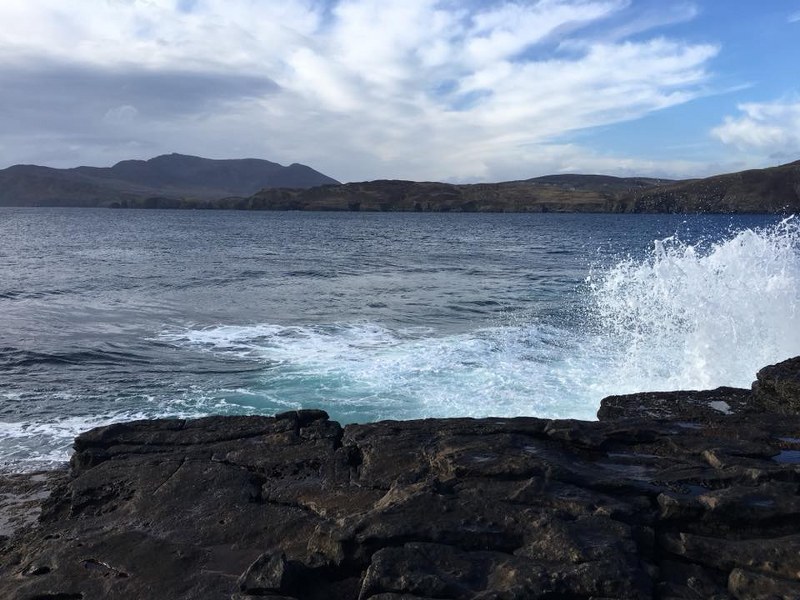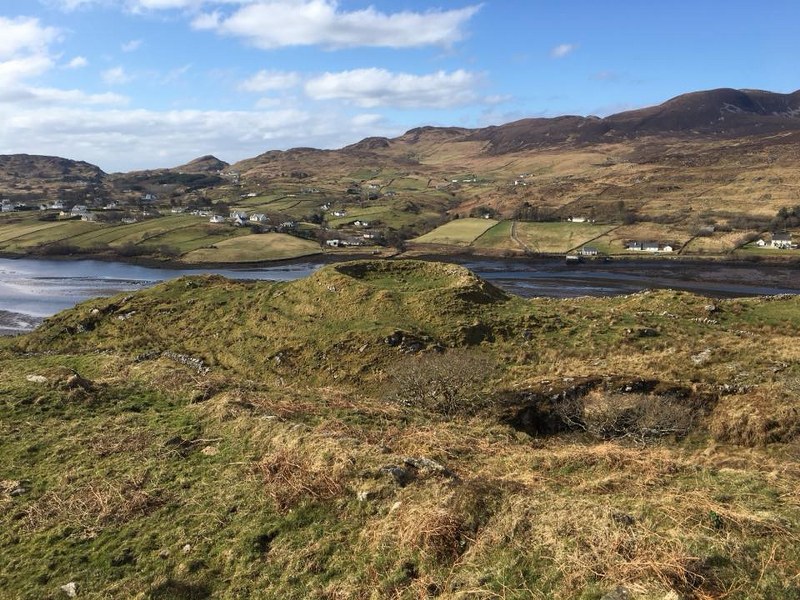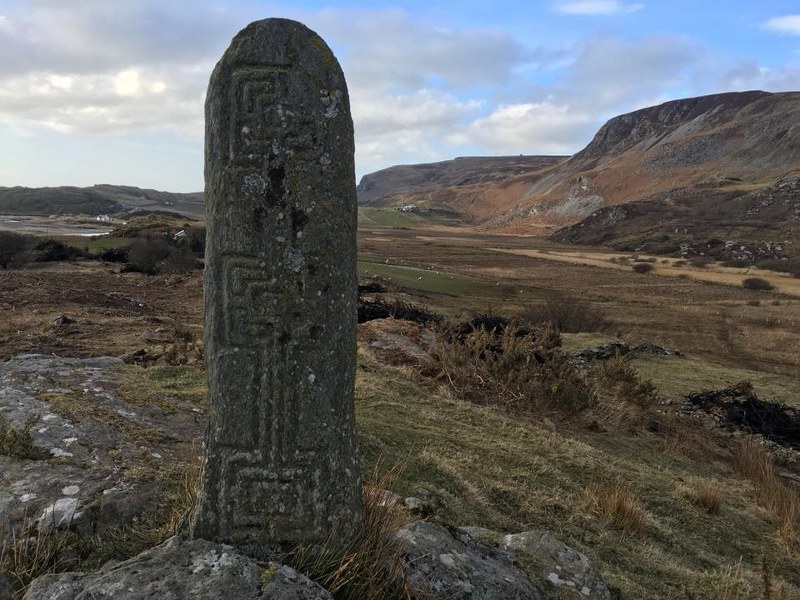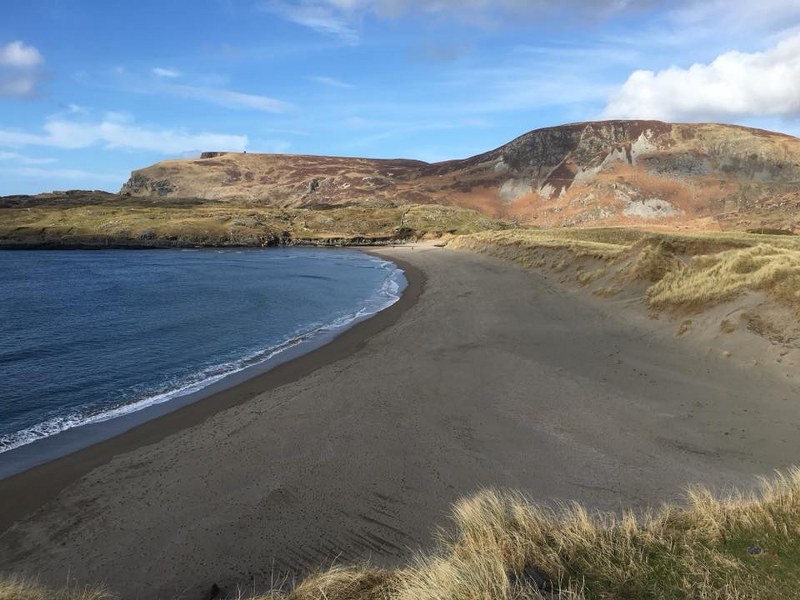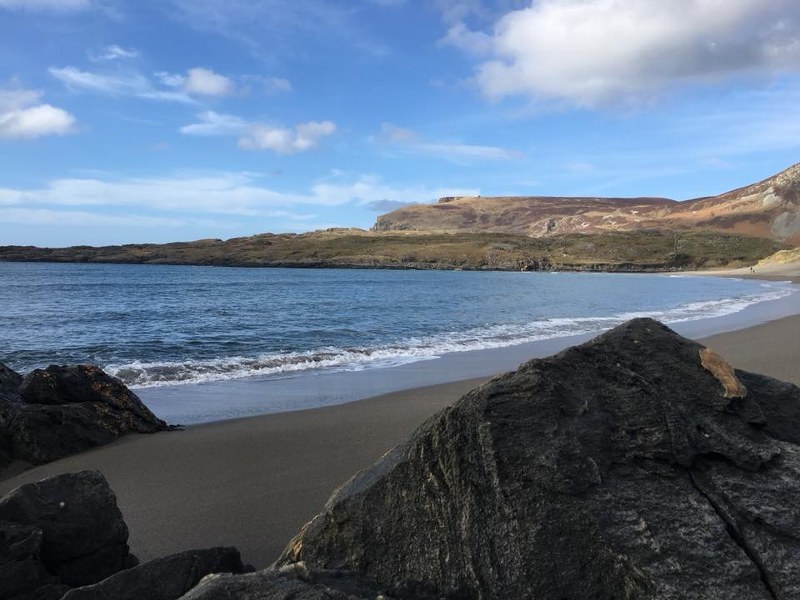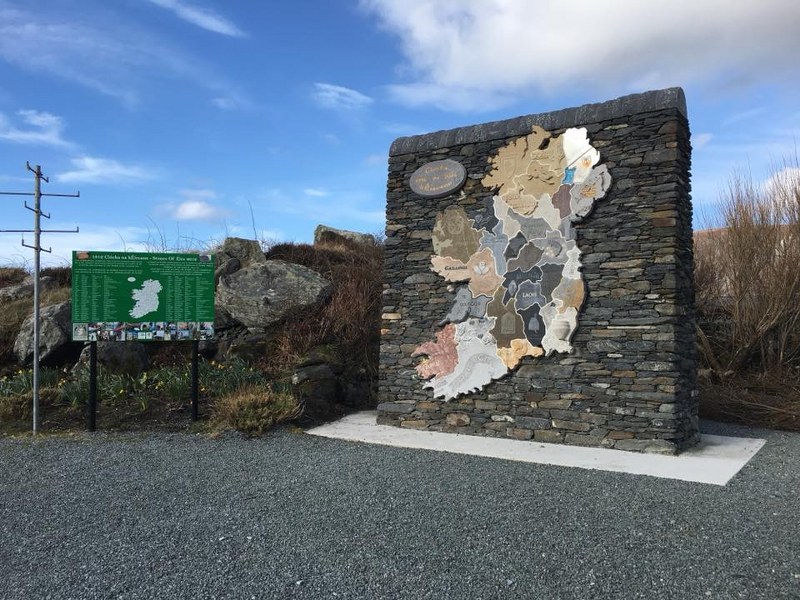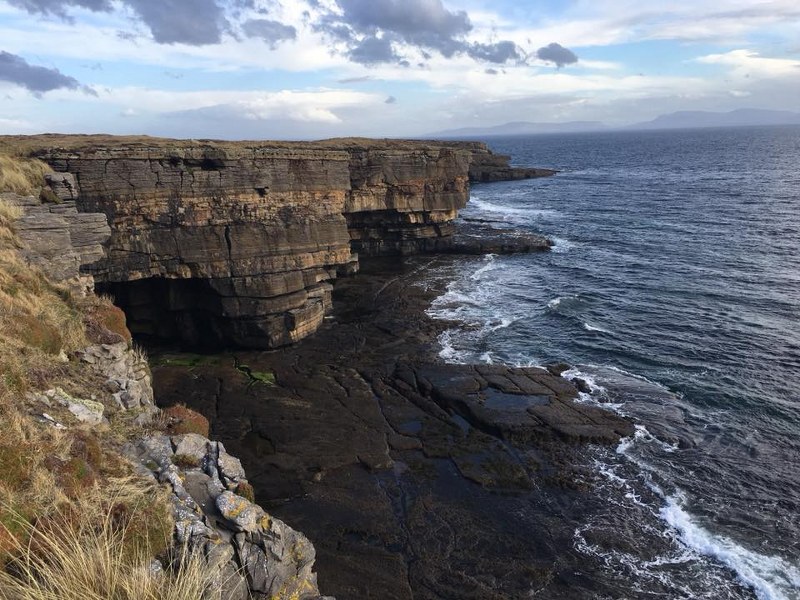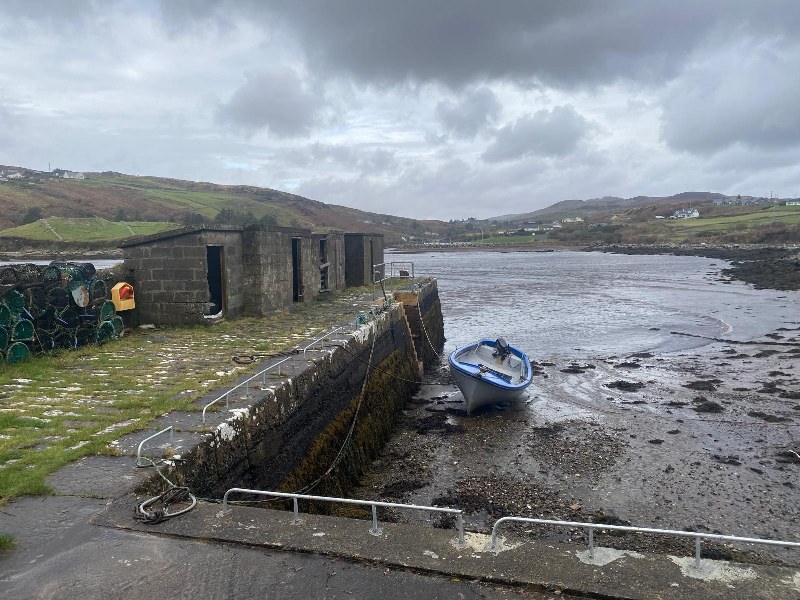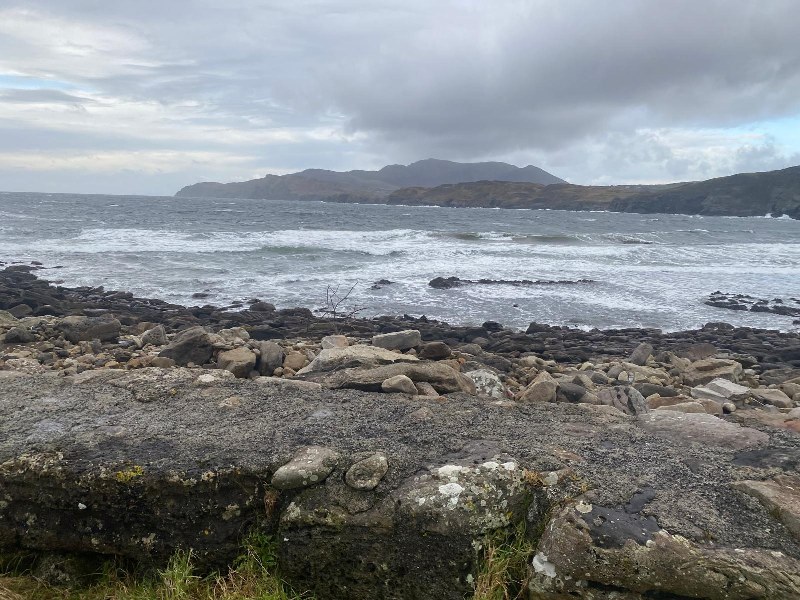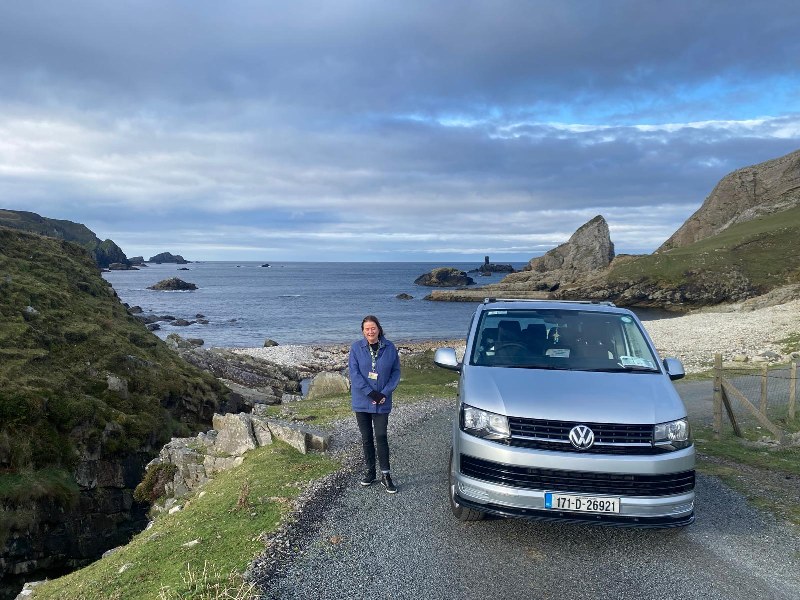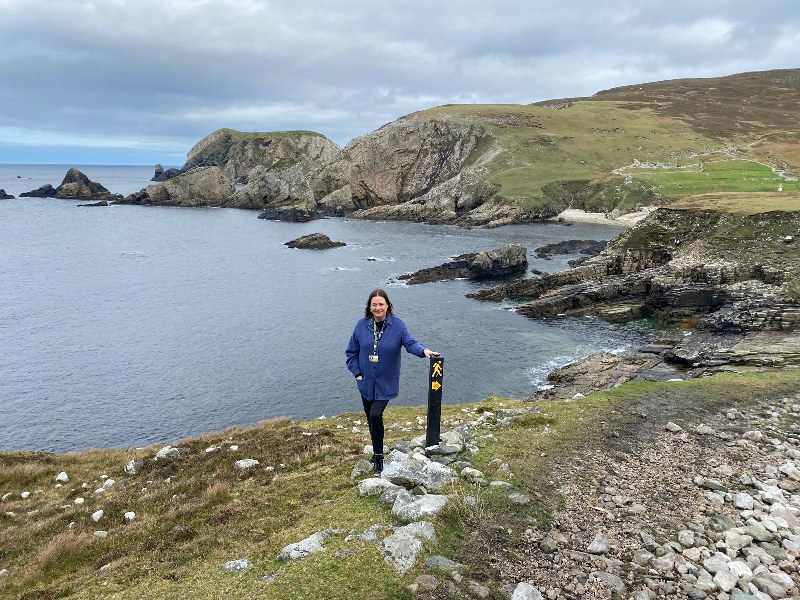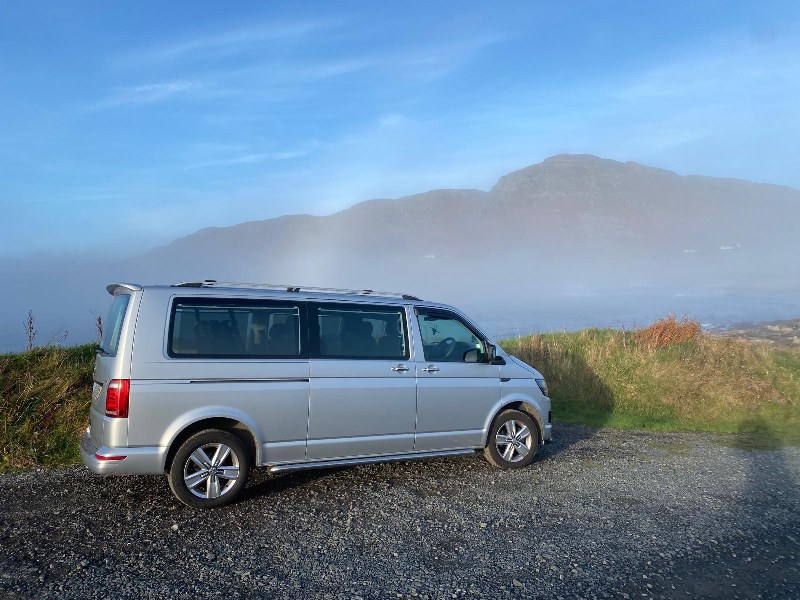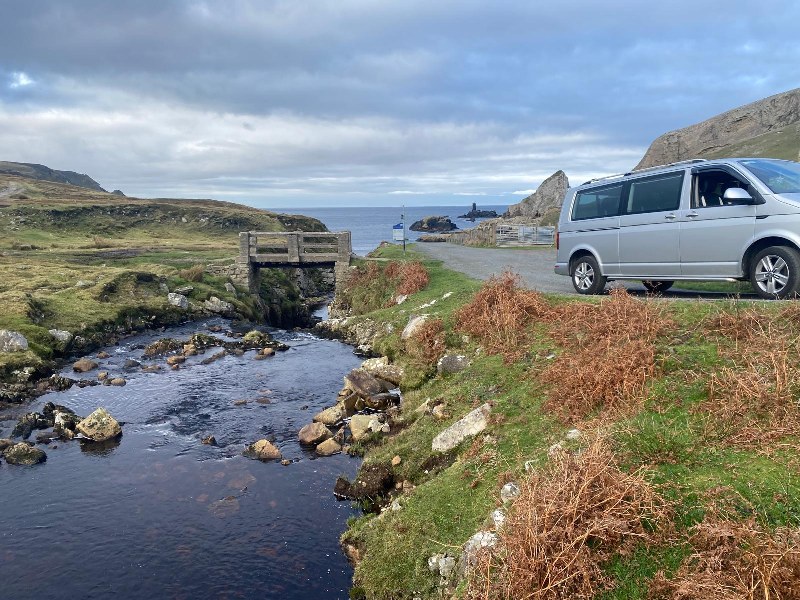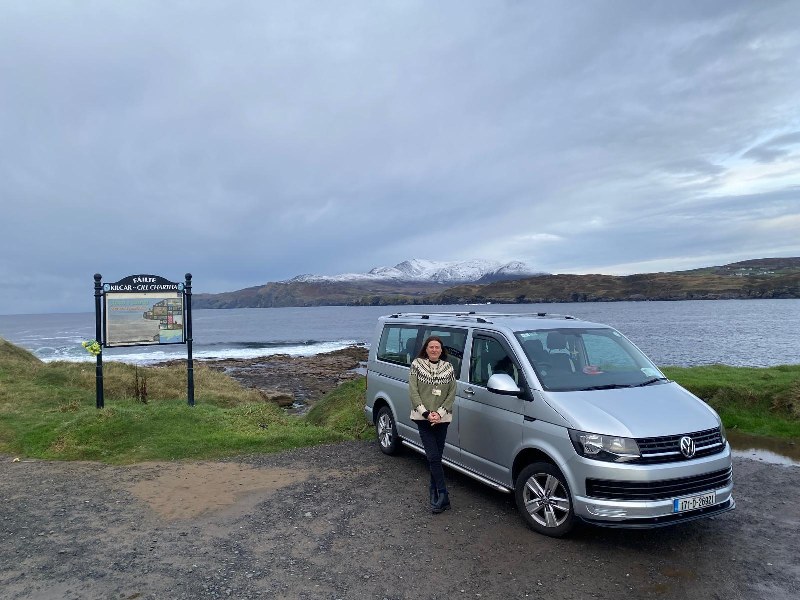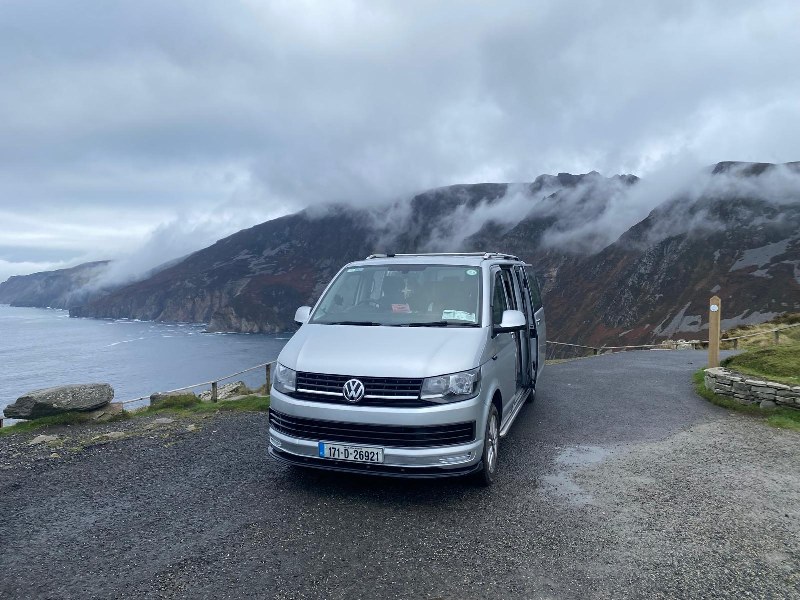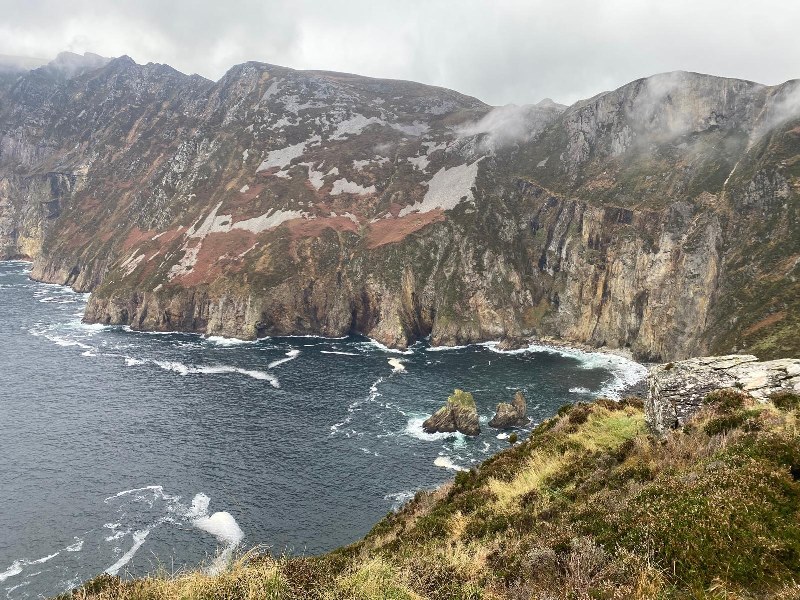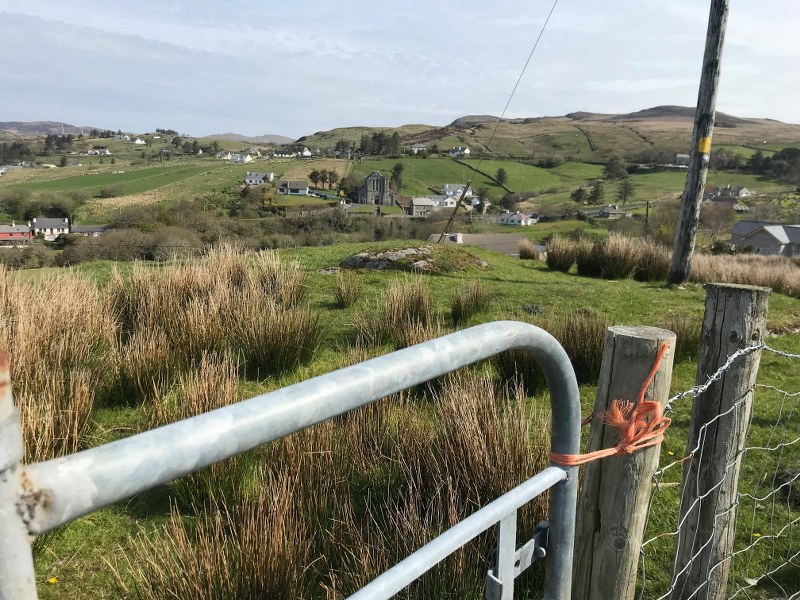
One of the first walks I went on when I came to live in Kilcar was the road behind our house.
This road (L12151) branches off the main road from Killybegs to Kilcar (R263) just after the old blue forge and just before Leitir bridge.
It is locally known as the far road or the high road and affords the walker a lovely tranquil walk to Kilcar village or alternatively a link up with the Kilcar to Muckross road.
Running South-West along the foot of Croagh Muckros (left) and the Glenaddragh River (right) which once used to power the Mill-wheel at the Corn Mill in Leitir, journeying on to the village were it joins up with the Ballagdoo River which flows from the Gln of Ballagdoo, and then makes its way out to sea passing the football grounds en-route.
This road offers a natural wild landscape. Hedgerows with bog myrtle, wild blueberries/ fraughan, salmon-berries, heathers and wild flowers grow at the side of this old cart road which once served as the main route to Kilcar before the bridge was built in Leitir. Streams abound with frogspawn in early spring. Last year during the really hot weather I saw a wee tiny lizard “scooting about” in the hedge but I wasn't fast enough to get “the photo” he was gone so quickly.
As I walk along the road I am drawn by the majesty of Sliabh Liag. This landscape was set down millions of years ago and I always think that I am walking somewhere very special. With the help of the sunlight and shadows one can see from the topography the evidence of the geology and archaeology. The uplands below Sliabh Liag and the surrounding areas of Churchtown and Drimreagh present a beautiful pattern of dry stone walls and patchwork field systems. All the physical features, streams of colour, movement in the hills, clusters of trees and the wildness of this beautiful landscape are a delight to the eye.

On looking to my right I can see St Cartha’s church built in 1904 and Dedicated to St Cartha, the Patron saint of Kilcar. This church is a spectacular sight in such a rural setting and the far road views highlight St Cartha’s Church very well, which by the way is the 5th church to be built in Kilcar (I will write about that later) Behind the church I can see the pathway which leads to the line road, passing the bell tower, the old national school and the old Parochial house which are part of the built heritage of this area on the originally named line road spanning out towards Bogagh and on to Carrick and Glencolmcille.
On shorter walks I turn right down the hill, at the first junction, to meet the coast road and then a short walk to the village. It's a sheer decent (I try to avoid walking up the way at all costs I have renamed it heart-break hill). In front is St Cartha’s old church ruin, it feels like Churchtown is rising up and Sliabh Liag is disappearing. The displays of bluebells and hawthorn blossoms in spring around St Cartha’s old church ruin are a welcome sight.
On longer walks, following the gentle turns and slight elevated heights, all is revealed I am now heading in the direction of the sea It is there in front of me just like the first time I walked on this road, what a moment that was. I am so grateful for this view on my daily walk. I can see Towney Bay and on the horizon the coast of Sligo and Mayo. So now do I keep walking into the village or do I stroll over to Towney pier with its cobbled deck, cut stone steps which is part of the maritime heritage of Kilcar and sit for a while and listen to the sea birds and look across at Dun Ulún Ring Fort or will I have a wee wander around the Dún.... decisions...

